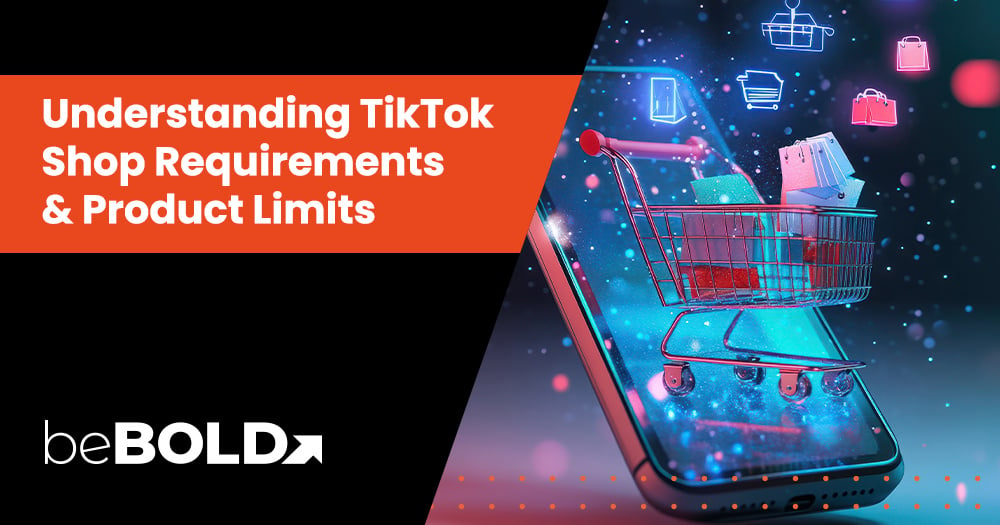The Amazon marketplace is a world of endless possibilities, connecting buyers and new sellers across the globe. Whether you're a passionate entrepreneur looking to grow your business or a shopper on a quest for trusted products, the ability to find a specific seller can open doors to a more personalized and seamless experience.
Beyond transactions, it's about forging connections—relying on sellers you trust, resolving concerns efficiently, or gaining insights to refine your business journey.
While it might feel like a daunting task, this blog simplifies the process, offering thoughtful strategies to confidently navigate the Amazon Seller Search feature. Whether it's to rekindle a trusted shopping relationship or explore new opportunities, this guide will make your Amazon journey a little more meaningful, efficient, and rewarding.
Why Understanding Amazon Seller Search is Essential?
Wondering why you should understand Amazon Seller Search? Well, knowing how to navigate Amazon Seller Search helps you find reliable sellers, evaluate specific product quality, and ensure a smooth shopping experience. There are many more reasons to have a clear understanding of this feature which we shall learn in the following sections.
1. Better Understanding of Your Competitors
Amazon Seller Search helps you analyze competitors by revealing product listings, pricing, promotions, and customer feedback. This insight allows for competitor research to assess their strengths, weaknesses, and trends in your niche, helping refine your strategy and improve your product visibility.
2. Evaluating Potential Suppliers
Seller Search helps find reliable suppliers by reviewing their ratings, reviews, and shipping policies. Evaluating suppliers helps mitigate risks like product quality issues and delivery delays, ensuring a consistent customer experience and fostering brand credibility.
3. Identifying Collaborative Opportunities
Amazon Seller Search aids in identifying potential partners for collaboration, such as cross-promotions or bundling. Analyzing other sellers' products can lead to new opportunities, helping to boost sales and expanding your brand's reach to untapped markets.
4. Intellectual Property Concerns
If you suspect an intellectual property issue or infringement, Seller Search lets you find the seller and address concerns directly or report the issue to Amazon, protecting your brand from counterfeiting and unauthorized use.
5. Smooth Out Order Hiccups
If issues arise with your order, Seller Search helps you locate the seller to resolve the problem quickly, preventing delays, returns, or refunds and ensuring a smooth shopping experience.
What Are the Steps on How to Find an Amazon Seller?

Understanding how to find an Amazon seller is not rocket science. You can locate the specific seller you're looking for with a few easy steps and clicks, guiding you through the process of finding your preferred seller. Let's now delve into the simple steps that can guide you in identifying your preferred seller.
1. Who's Selling? Identify the Store and Seller!
To find an Amazon seller, the first step is to start on the product page. Look for a blue hyperlink under the product title or find the seller's name next to the "Sold By" button on the right side. Clicking on either will direct you to the seller's storefront.
Once on the seller's profile page, you'll find valuable insights and information like ratings and reviews, as well as an option to contact them via the 'Ask a question' button.
2. Using Amazon Storefront Name
If you know the name of the seller's product store, locating them is even easier. Typically, a seller keeps the product store name catchy and memorable.
To use this method, go to Amazon's homepage and follow these steps:
- Add "/shops/" followed by the name of the storefront at the end of the URL.
- Press 'Enter.'
Following these simple steps, you will be directed to the seller's storefront page. Here, you'll find a comprehensive view of their inventory.
3. Navigating Categories and Departments
To find an Amazon seller through departments, go to the 'Shop by Department' section on the homepage and select the relevant category for the type of product you are looking for. Narrow your search by choosing a sub-category, then view the results.
On the left sidebar of the search results page, under 'Featured Brands,' you'll find a list of sellers. Clicking on a brand's box will filter the results to show only products from that seller, making it easy to find the right seller for your needs.
4. Utilizing the Search Bar Method
Using the search bar on Amazon's homepage is another efficient tactic to find a specific seller.
To do so, follow these steps:
- Go to the Amazon homepage
- Locate the search bar at the very top of the page
- Key in the seller's name you're looking for into the search bar, ensuring the spelling is accurate
- Press 'Search' or simply hit enter
Amazon's optimized search algorithm promptly generates a list of results based on the seller's name.
How to Verify an Amazon Seller's Credibility?

Once you've found your desired seller on Amazon, the next critical factor to keep in mind is verifying their credibility. Let's delve deeper into the aspects of Seller's credibility.
1. Evaluating Seller Ratings and Reviews
When shopping on Amazon, seller ratings and reviews are super helpful in deciding if a seller is reliable. To check them out, visit the seller's profile page. You'll find their feedback rating, which shows the percentage of positive reviews, and detailed customer reviews that share real experiences. Generally, higher ratings (4-5 stars) mean better customer satisfaction, so aim for sellers with solid feedback.
2. Assessing the Seller's Shipping and Return Policies
It's also important to look at the seller's shipping and return policies. You'll find info about delivery times, shipping charges, and how they handle returns on their profile. Clear, easy-to-understand policies show that the seller values a smooth shopping experience and helps you know what to expect if you need to return something.
How to Safely Contact Amazon Sellers?
Establishing communication with the seller can start by safely contacting them. Amazon allows you to interact with its sellers directly. It may be essential to ask specific questions about the product, resolve any confusion about orders, or seek post-purchase support.
To contact a seller safely, there are a few simple steps that need to be followed:
- Go to the seller's product page and click the hyperlinked name next to "Sold by." This will lead you to the seller's profile.
- Locate and click on the "Ask a question" button.
- Type your question to the seller, potentially include any relevant files, and remember to maintain professional decorum.
- Hit send. Post sending your message, prepare to wait for a response from the seller. The duration might vary based on the seller's response time.
- Ensuring safe contact is of utmost importance on e-commerce platforms like Amazon. This can effectively resolve your queries and boost the confidence levels of your shopping experience.
What Are Some Common Mistakes When Using Seller Search?
When you use Amazon's Seller Search option, you may make a few mistakes unknowingly. In the next section, we will talk about these errors and the potential solutions to solve them.
-
Misinterpreting Seller Ratings
- Mistake: Relying solely on overall ratings without reading detailed reviews can lead to misconceptions about a seller’s reliability.
- Solution: Always check individual reviews for context, focusing on recent feedback and comments about delivery times, product quality, and customer service.
-
Overlooking Seller Policies
- Mistake: Failing to verify return, refund, or shipping policies can result in unexpected costs or difficulties in case of issues.
- Solution: Carefully review the seller’s policies and ensure they align with your expectations, especially for high-value or international purchases.
-
Ignoring Product Authenticity
- Mistake: Not confirming if the seller offers genuine products, particularly for branded items, can lead to purchasing counterfeits.
- Solution: Look for "verified seller" badges, and cross-check product details with official brand information.
-
Neglecting Price Comparisons
- Mistake: Jumping at the first listing without comparing prices may result in overpaying for the same product.
- Solution: Use tools or filters to compare prices across multiple sellers while considering shipping and additional fees.
-
Not Checking Seller Location
-
- Mistake: Assuming all sellers ship locally without confirming can lead to delays or higher shipping costs.
- Solution: Verify the seller’s location and estimated delivery times before finalizing your purchase.
By staying vigilant and following these tips, you can make more informed and confident decisions while using Seller Search.
Addressing Common Issues in Amazon Seller Search

Despite Amazon Seller Search's convenience, users often encounter specific issues using this feature. Let's delve deeper and discuss possible solutions to these common problems.
1. Seller Not Appearing in Search Results
If a seller doesn't appear in search results, it could be due to common or generic store names, recent name changes, or Amazon account issues like suspension. Search via the product page, Amazon storefront name, or browsing categories and departments to find them. Using multiple search methods increases your chances of locating the right seller.
If you’re a seller and wish to locate your competitor through this feature, you can do so by following the same process. Additionally, partnering with beBold Digital can help you get all the information you need regarding what’s going on in your niche. Having this information can further help you grow your brand while also generating more sales!
2. Difficulty Finding Contact Information
Amazon doesn't provide personal contact details to protect privacy. However, you can easily reach a seller by clicking the "Sold by" link on a product page and selecting "Ask a question" on their profile.
Always keep communication professional and avoid sharing personal details, as this helps maintain a secure environment for both parties.
Conclusion
Mastering Amazon Seller Search is a crucial skill for both buyers and sellers, helping customers locate reliable products and sellers by evaluating ratings, reviews, and policies. Shoppers can use this information to ensure quality, timely delivery, and good customer service, making their shopping experience smoother.
For sellers, understanding this feature is key to managing listings, optimizing product visibility, and tracking performance. Besides, utilizing Amazon Seller Central and its analytics allows Amazon businesses to scale, attract more customers, and enhance their digital presence. With these strategies, both buyers and sellers can fully harness the potential of Amazon’s vast marketplace.
Frequently Asked Questions
How do I know if an Amazon seller is legit?
To confirm an Amazon seller's legitimacy, check their ratings and reviews. Assess their shipping and return policies, which are available on their profile page. Be cautious if the seller lacks contact information or maintains very low prices. It's better to trust sellers with higher ratings and satisfactory customer reviews.
How do I find someone's storefront on Amazon?
To find someone's seller’s storefront on Amazon, search for their seller's name in the Amazon search bar. Click on their seller name in the search results to access their seller’s storefront. Another way is to visit their product listing and click on the seller's name under "Sold by" to reach their seller’s storefront.
How can I contact a seller directly on Amazon?
To contact a seller directly on Amazon, go to the product page, click on the seller's name, and choose "Ask a question." Alternatively, visit the seller’s profile or storefront and look for contact information. Remember, communication is vital for a successful transaction.
How do I find an Amazon seller's location?
To find an Amazon seller's location, check the "Ships from and sold by" section on the product page or the "Seller Information" section on their storefront. Contact the seller directly through the "Ask a question" option on their profile for detailed information.







Comments